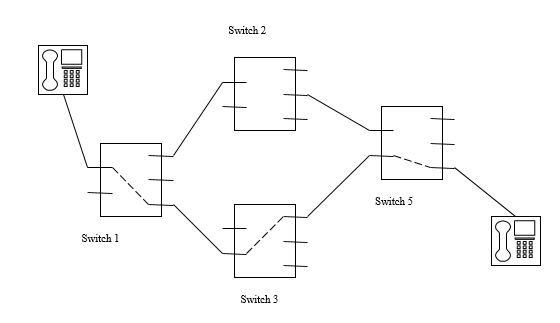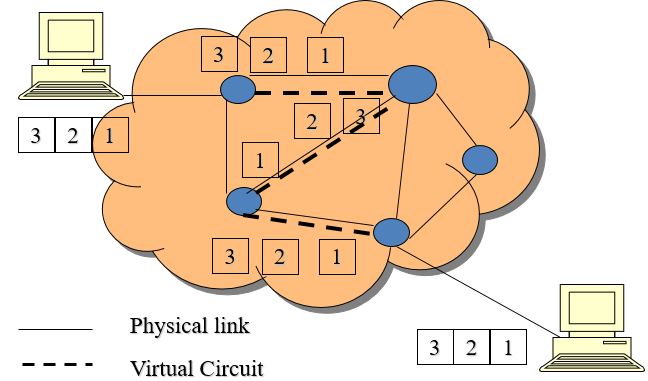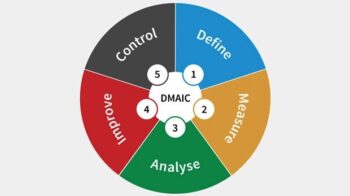Table of Contents
Switching
Switching is the process of providing a temporary connection between and incoming line and a particular outgoing line.
- Electronic switches interpret the dialed number and make the necessary connection.
- The numbering scheme is hierarchical
- Ex: 91 – 80 – 2555 – 1234
- Most switches in PSTN local exchanges are designed to handle 10000 lines.
Types of switching
- Circuit switching: Mainly used for voice communication
- Packet switching: Preferred for data communication
- Datagram packet switching
- Virtual Circuit (VC) packet switching
- Switched Virtual Circuit (SVC)
- Permanent Virtual Circuit (PVC)

Circuit Switching
- An end-to-end connection (circuit) is established before communication can begin.
- The circuit is dedicated for that connection till it is disconnected.
- Not suitable for data transmission, since data is generally bursty.
- The circuit utilization will be very low.
- One has to wait for the circuit to be set up.
- Therefore data transmission normally uses packet switching.
Packet switching
- Packet switching does not provide a dedicated connection.
- Messages are divided into fixed-size packets.
- Each packet has information about the destination (and sender) in its header.
- No set-up time needed.
- Adopts a store-and-forward technique for the transmission.
- Delay is mainly due to the waiting and processing time at the nodes (routers).
- Delay depends on the network traffic along the path taken by a packet.
- Charges are based on the number of packets sent.
- Network lines are utilization optimally.
Datagram Packet switching
- The packets of a particular message, going from A to B, may take different routes, depending on the traffic condition when they are being transmitted.
- Flexibility in taking the best route.
- There is a possibility of the packets reaching the destination in a different order.
- Sequence numbers are used to help re-order them at the receiver side.

Virtual-circuit Packet switching
- All the packets of a particular message take the same route, which is determined in the beginning.
- This route is called the Virtual Circuit.
- The packets always arrive in the correct order.
- The routing is simpler at the intermediate routers.


